Industries of India
by Devender
0 1885
The industries of India can be divided into three major groups: Primary Industries, Secondary Industries, and Tertiary Industries.
Industries of India
1 Primary Industry
It uses natural raw materials. For Example:
Hunting-gathering, pastoral activities, fishing, forestry, agriculture, mining, and quarrying
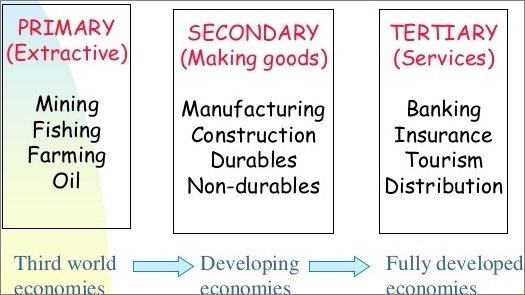
2 Secondary Industries
It uses the material obtained from primary industry to make complex products.
- Steel - Automobiles, Railway engines
- Wooden Pulp - Rayon
- Al + Cu - Electrical and Electronics products
- Fibers - Readymade Garments
- Heavy Industries - Engineering, metal goods, heavy chemicals, shipbuilding, locomotives
- Light Industries - Electronics, plastic, textile, cosmetic, etc.
- It is basically a service providing industry
- Services like tourism, education, entertainment, advertisements, consultancy, Administration, healthcare, etc. are provided by this industry
- Factors responsible for the location of industries
- Availability of Raw Material
- Power Resources
- Availability of water
- Labor
- Transportation
- Availability of Market
- Capital
- Government Policies
- Reduce dependence on other countries and become self-sufficient
- Maintain the balance of trade
- Accelerate the economic growth
- Solve the problem of unemployment
- Employment opportunities in every region of the country
- Equitable distribution of national income
- Removal of regional disparities
- Check up on the concentration of population in certain parts of the country
- Industries polluting the environment
- It emits harmful effluents and smoke into the air
- It discharges large quantities of chemical waste and garbage
- Industries are known to degrade fertile lands
- Contamination of Underground Water
- Use of Hydro-Electricity instead of thermal power
- Use of Higher Quality Coal for Thermal Plants emitting less smoke
- Shifting of Factories out of Municipal Limits
- Discharging dirty water and smoke only after treatment
- Recycling of industrial Water
- Enacting Stringent Laws for checking Pollution and Degradation of the Environment
- Planting of Trees and Creating Mini-Forest Areas by Industry owners
- Helps to earn additional income for rural people
- Earns a lot of foreign exchange for the country
- Generate seasonal as well as perennial employment for labor
- Plays a significant role in the Indian national economy
- Kolkata -Raw material brought from the North Eastern States, cheap labor, coal, water available
- Lucknow -Depend on bagasse (from sugar mills), rags, wheat bran and Sabai grass brought from Tarai region
- Fishing in India - East vs West
- Western Coast has a wider Continental shelf which brings more plankton and fishes
- Commercial varieties like Prawns and Mackerel are mostly confined along the western coast
- nearness to market
- nearness to a water body (for dyeing, bleaching)
- Energy to run power looms and textile machines
- cheap labor supply
- availability of capital/finance
- Maharashtra (Mumbai – Cottonopolish of India)
- Ahmadabad (Gujrat)
- Coimbatore (Tamil Nadu)
- Fluctuations in the production of raw material
- Poor Quality of Cotton produced in India
- Unavailability of adequate and unfailing supply of Power due to the inadequacy of regular coal supply
- Increased competition in the global market both in cost and quality from countries such as Japan, Korea, the USA, and Taiwan
- Old and outdated machinery
- Need for modernization as low productivity and high production cost exists
- Strikes, lock-outs, and market rivalry have also made the industry sick
- The invention of synthetic as a substitute for cotton has also resulted in the decline of the cotton industry
- Mulberry silk - Mainly in Southern states (Karnataka, Tamil Nadu, Andhra Pradesh), WB, and J&K
- Non-Mulberry silk - Jharkhand, Chhattisgarh, Odisha, and North East
- Sericulture does not involve hard labor
- Silkworms can be reared by women and old people
- It works on simple technology
- It doesn't need any sophisticated equipment
- It can be done by small and marginal farmers
- Energy - The energy required is taken from coal. Raniganj and Jharia coal mines.
- Water - Jute processing requires a large quantity of water for washing, bleaching and retting which is easily available from the Hubly river
- Labor - Jute processing is labor-intensive and cheap labor is available from Bihar, Odisha, West Bengal
- Capital - Kolkata always had good banking-finance facilities as it was the British Capital. Jute mills flourished the most here.
- Viticulture
- Perishable
- Weight loss
- During British-raj, North India used to cultivate indigo as a cash crop but then synthetic dyes were invented
- Farmers switched to sugarcane
- In South India, farmers have better cash-crop alternatives such as cotton, tobacco, coconut, groundnut, etc.
- The sugar contents in southern state's cane are higher
- South has better export facilities as compared to North
- Climate is also suitable for the cultivation of sugarcane
- Labor availability
- Raw material
- Climate
- Topography
- Region
- Soil
- Temperature
- Transport
- Market
The Secondary industry can be further classified into two categories.
3 Tertiary Industries
It is not a branch of manufacturing but it sells the products of primary and secondary industries by transport, trading, wholesale and retailing.
Any industry has to take into account these factors before deciding its location. These factors are:
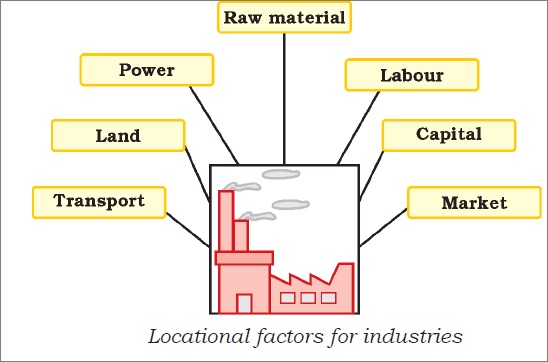
Need for Industrialization in India
India needs industrialization to:
Why decentralization of industries
The decentralization of industries should be done as it brings:
It is not like everything is good about Industries as there are certain aspects of industries that also hurt us. Industries are known to pollute the environment as:
However, there are few solutions that can solve the following problems.
Solutions
Indian Industries
1 Cottage Industries
It provides millions of jobs to people and also keeping the migration of rural people to urban areas. It can be started with low investment and uses local raw material which is optimum utilization of national resources.
2 Timber Industry
It is dependent on bamboo, softwood and requires near raw material and market.
Fishing in India is more developed along the Western coast as compared to the East coast due to the following reasons:
3 Cotton and Textile Industry
Cotton as a raw material doesn't have much weight and it is non-perishable. Even when it is changed to yarn/textile, it hardly has much weight. So, proximity to raw material sites is not essential as it doesn't offer great cost-saving in transportation. Therefore, other factors become more important in industrial locations such as:
Climate as a factor
In the dry climate, the cotton threads will break quickly during spinning which will halt the machine and someone has to join the threads again to kick start the operation again which is not good for mass production.
In humid conditions, the thread will rarely break. That is why cotton textiles were set up near coastal areas but now there are humidifiers that can artificially increase the air moisture in factories/workshed. So, a factory can be set up anywhere and can be run efficiently, irrespective of the climate outside.
Cotton Industry locations in India
Challenges faced by the cotton industry
The production of cotton is uncertain and it fluctuates depending on the climatic conditions. Hence, the supply is irregular.
4 Silk Industry
India has a huge market and vast labor to match silk farming. India grows all important varieties of silk such as Mulberry, Tasar, Oak Tasar, Eri, and Muga but still, the demand is greater than the production and hence, India has to import silk from China especially bivoltine mulberry silk.
Geographical Factors
The raw material (Mulberry plants) can be grown in any type of soil even in forest fringes, hill slopes and it has the tendency to even withstand drought. It works well in non-green revolution, non-irrigated areas of East and NE India.
5 Woolen Industry
Wool as a raw material is non-perishable and lightweight. Indian wool consists of coarse fibers which irritate the body. So, we have to import Australian wool for decent apparel.
For non-apparels, New Zealand's wool is mixed with Indian wool to produce decent Carpets, blankets, etc. Hence, the location of woolen textile is not tied to the raw material sites.
Market:
Wool has good demand in North India as the winters get very cold. That is why nearly 75% of industries are concentrated in the Northern States. Parallel to the wool-market factor, you can see that the Cotton textile industry is profound in the southern half of India because warm-humid climate hence more demand for Cotton garments in south India than woolen.
6 Jute Industry
It is mainly based in West Bengal (India). 90% of Jute is cultivated in the Kolkata hinterland and it is the only crop that can withstand the flooding of this region.
There are Vineyards in Himachal, Nashik, and Bangalore due to favorable climate and soil conditions.
The state governments are giving tax benefits to encourage the wine industry and Maharashtra gives stamp and Excise duty exemption, sale tax holiday, etc. to new wine units.
7 Sugar Industry
The sugar mills are located near the sugar-growing areas because of two factors:
Sugarcane contains sucrose and once you cut the sugarcane, the sucrose content starts to decline. Hence raw material must be quickly transported.
Sugar accounts for only 10% of the bulky sugarcane and therefore it is prohibitively expensive to transport sugarcane over long-distance in its original form.
Sugar Production - North India vs South India
South India has no loo, no frost, and the moderating effect of the ocean. So, it has an ideal climate for sugarcane growth. However, the sugarcane cultivates/industry in South India is not as large as the UP-Maharashtra belt as:
Now, the sugar industry is shifting to South India from North India because:
8 Tea plantation Industry
Weeding, manure, pruning, and plucking are tedious jobs and need skill with patience. So, a cheap female labor force is essential as tea has to be grown in hill slopes, mechanization is not possible.
Even while drying, rolling, fermentation, grading, and packaging tea, skilled manpower is needed. Therefore, tea plantation is done near areas with high population density.
Tea leaves to tea involves considerable weight loss. Therefore, tea processing is done in the estate/plantation itself. Further blending/repacking could be done at the break of the bulk location. For Example - port cities like London.
Frost damages the leaves hence tea is not grown beyond Northern China/Honshu while a very long winter retards plant growth hence decreases yield.
Tea doesn't like stagnant water, therefore, it has to be grown on highland or hill slopes. For Example - the hills of Darjeeling, Jalpaiguri (West Bengal) and Nilgiri (Tamil Nadu).
9 Coffee Plantation - Karnataka and Kerala (India)
The Western Ghats and Nilgiri Hills region is suited for both Tea and coffee.
Red soil is best suited and hilly areas so that there is no stagnant water.
Coffee is grown on the Northern and Eastern slopes of the Ghat because coffee hates direct sunlight. The temperature stays nearly 25* C throughout the year.
From Kochi port.
Kochi port to (mostly) Italy and there is a local demand in South India.

Share:

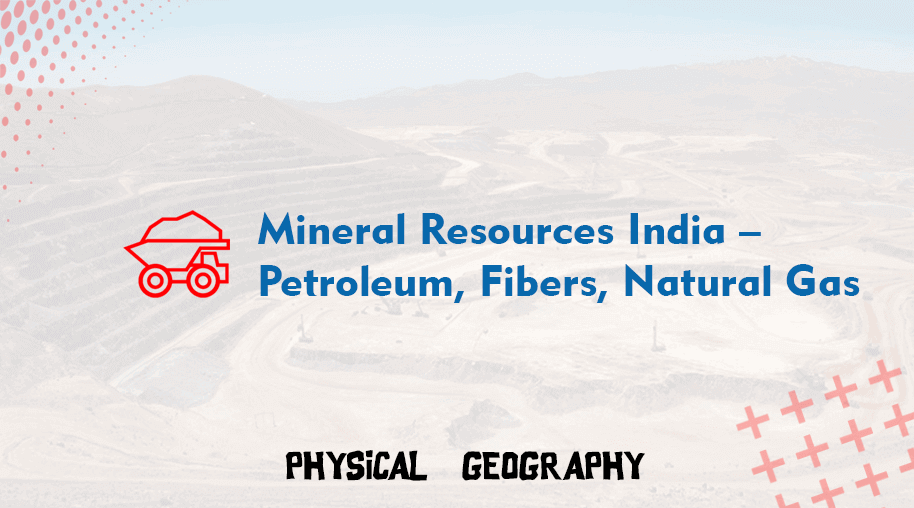
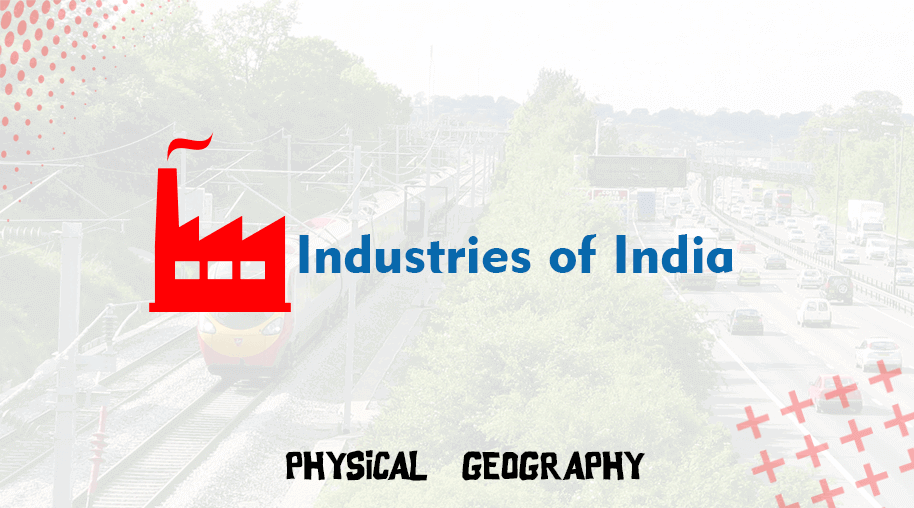
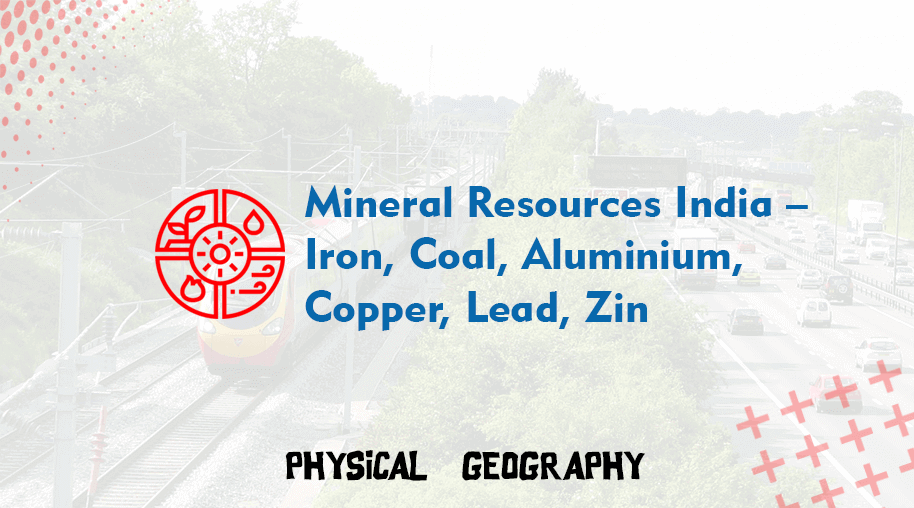
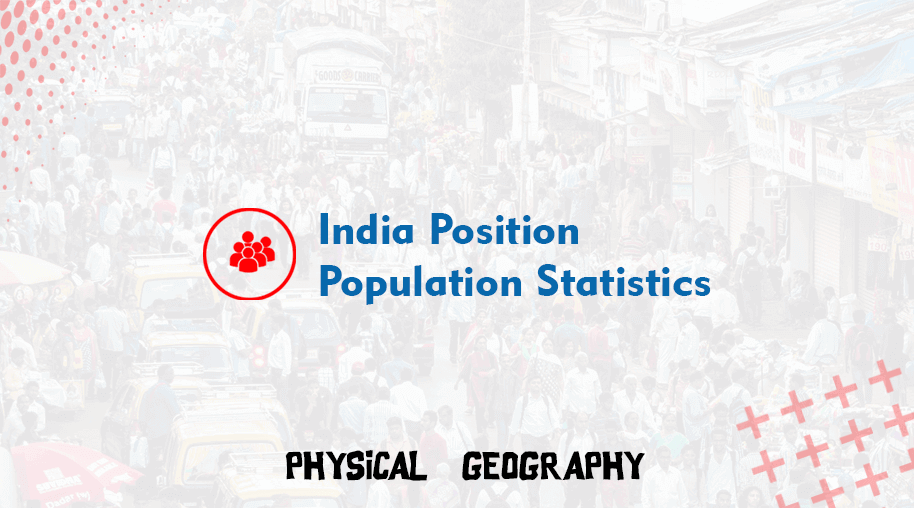


Comments
Waiting for your comments